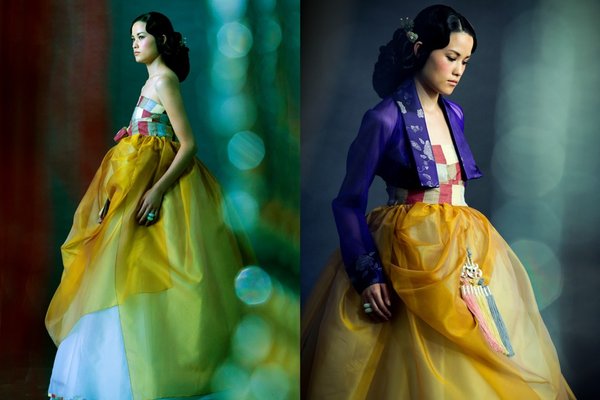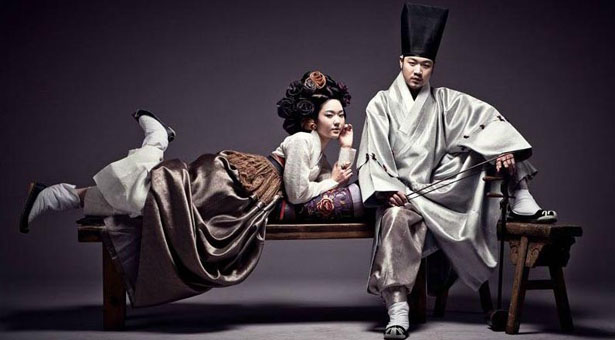Want to learn more about hanbok? Watch the introduction episode of this subject:
Viewing entries in
KWOW
The traditional hanbok indicated status. Wearing bright colored hanbok once symbolized royalty and upper class. Dull colors were reserved for commoners and their special occasions. Fast forward to the present-day. Nowadays anyone can wear anything as long as they have the money. In addition bright colors are at times seen as garish while dull colors can appear more sophisticated. Fashion designers continue to make traditional hanbok, but have fused them with their artistic vision.
The following hanbok are produced out of creative expression more than from today's functionality. There are other types of hanbok modern Koreans wear for special occasions such as Lunar New Years and doljanchi (baby's first birthday).
Kim Mehee Hanbok Couture
Kim Mehee Hanbok Couture
Kim Kyung Soo
Kim Kyung Soo
When a spirit enters their body, the mudang (Korean shaman) may engage in activities they normally don’t partake on a daily basis. Such was the case with Kim Num Sun, a shaman who practices Pyeongan Province style rituals. While she can’t drink alcohol nor smoke, her personality changes once the spirit of jangun (Korean warlord) possesses her. Her behavior suddenly becomes more masculine.
Shamans from the Hwanghae Province traditionally worshipped Korean warlords, especially General Choi Young. Some gradually prayed to military figures from other nations as well, including Genghis Khan and General Douglas MacArthur.
Mudang Seo Kyeong-Uk dresses up as a Korean warlord and dances on sharp blades with her barefoot. It’s a way to communicate with spirits and to receive their blessings. Mudang describe this as a feel-good experience.
Check out the rituals in action below:


































